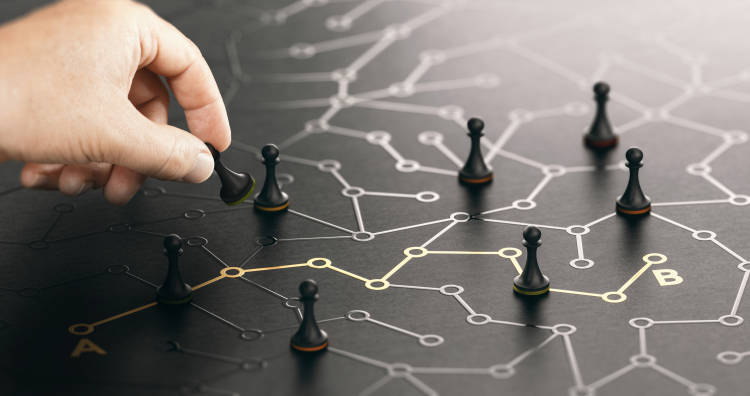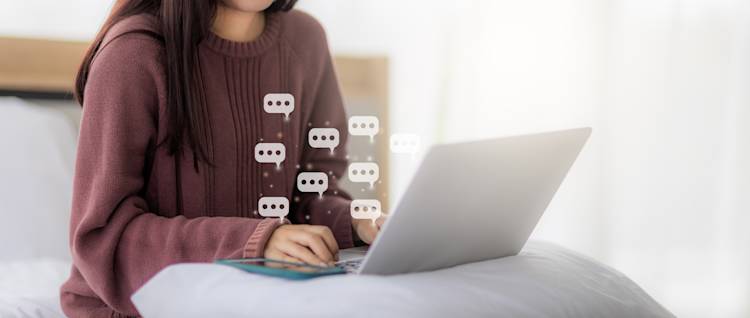What is customer self-service?
Customer self-service is a set of support tools and systems established to enable customers to self-seek resolutions to their issues and access information about a business’s services, products or policies. The objective is customer empowerment and enablement to perform routine tasks (like troubleshooting) on their own without a support agent’s help.
Customer self-service involves creating a knowledge base with FAQs and guides, setting up online portals for account management and utilizing AI chatbots for real-time assistance.
The benefits are plenty like cost savings, 24/7 service availability, faster resolutions, agent efficiency, scalability, consistency, empowerment, reduced wait times and improved CX. Read on to learn more.
Wondering why self-service is vital? Read The next best customer care is self-service
Difference between good customer self-service and bad customer self-service?
Nearly 59% of customers preferred self-service in 2023. That does put organizations under a lot of pressure to deploy self-service tools. Though before you deploy them, understand the difference between what defines good and bad self-service.
Attribute | Good Self-Service | Bad Self-Service |
User-Friendly | Intuitive interface, easy to navigate. | Confusing layout, unclear instructions. |
Accessibility | Available 24/7, accessible on various devices. | Limited hours, only works on specific devices. |
Content Quality | Comprehensive, up-to-date, relevant information. | Outdated content lacks relevant solutions. |
Search Function | Accurate search results, understands queries. | Poor search results don't grasp queries. |
Response Time | Swift, real-time responses to user actions. | Delayed responses, frustrating waiting times. |
Customization | Personalized, adapts to user preferences. | Generic, doesn't cater to individual needs. |
Engagement | Interactive, guides users through processes. | Passive, leaves users stranded without help. |
Feedback Loop | Encourages user feedback and acts on it. | Ignores user feedback, no improvements made. |
Reliability | Consistently works, rarely experiences errors. | Frequent errors, technical glitches disrupt. |
Integration | Connects seamlessly with other support channels. | Isolated, doesn't integrate with other systems. |
A good self-service strategy is all about putting the user first, making it easy for them to find solutions quickly, and providing a seamless, effective support mechanism. On the other hand, bad self-service creates frustration and confusion and can lead to customer dissatisfaction.
Learn more: How to craft a winning customer service strategy using self-serve
7 top benefits of customer self-service
Being aware of the differences between a good and bad self-service helps you build a solid foundation. On which you can build a great customer self-service system and derive the following benefits.
1. 24/7 support
Most customers expect their favorite brands to be available 24/7, which is challenging for agents due to their fixed working hours. However, self-help tools are available to customers around the clock to address their queries. Empower your customer base with a robust self-service ecosystem. Amplify your team's capacity through an array of self-serve solutions: enlightening knowledge bases and customer service chatbots.
It not only bolsters customer satisfaction but also delivers sustainable efficiency gains, enabling your team to focus on intricate cases while maintaining quality service across the board.
2. Quick query resolution
Customers want quick resolutions to their queries. In fact, customers expect a company to respond within five minutes. Self-service solutions provide customers with a quick and straightforward way to solve their queries — for instance, chatbots can interact with customers based on predefined logic and provide them with the ideal solution to their queries, sometimes supported by knowledge base articles.
3. Shorter ticket queues
Many of the inbound tickets you receive are repetitive, and agents spend a great deal of time resolving them day in and day out, which affects their bandwidth to handle complex customer queries in a timely manner. Customer self-service options take care of these common queries, allowing agents to focus on the tickets that require critical thinking and the human touch.
Moreover, when customers can resolve their queries themselves, the amount of support tickets raised by customers reduces over time.
💡 Sprinklr pro-tip: Lower your contact center costs by ensuring that only complex customer issues are handled by live agents — and the rest are automatically routed to self-serve channels like community forums and chatbots, by leveraging AI-powered routing, as shown below.
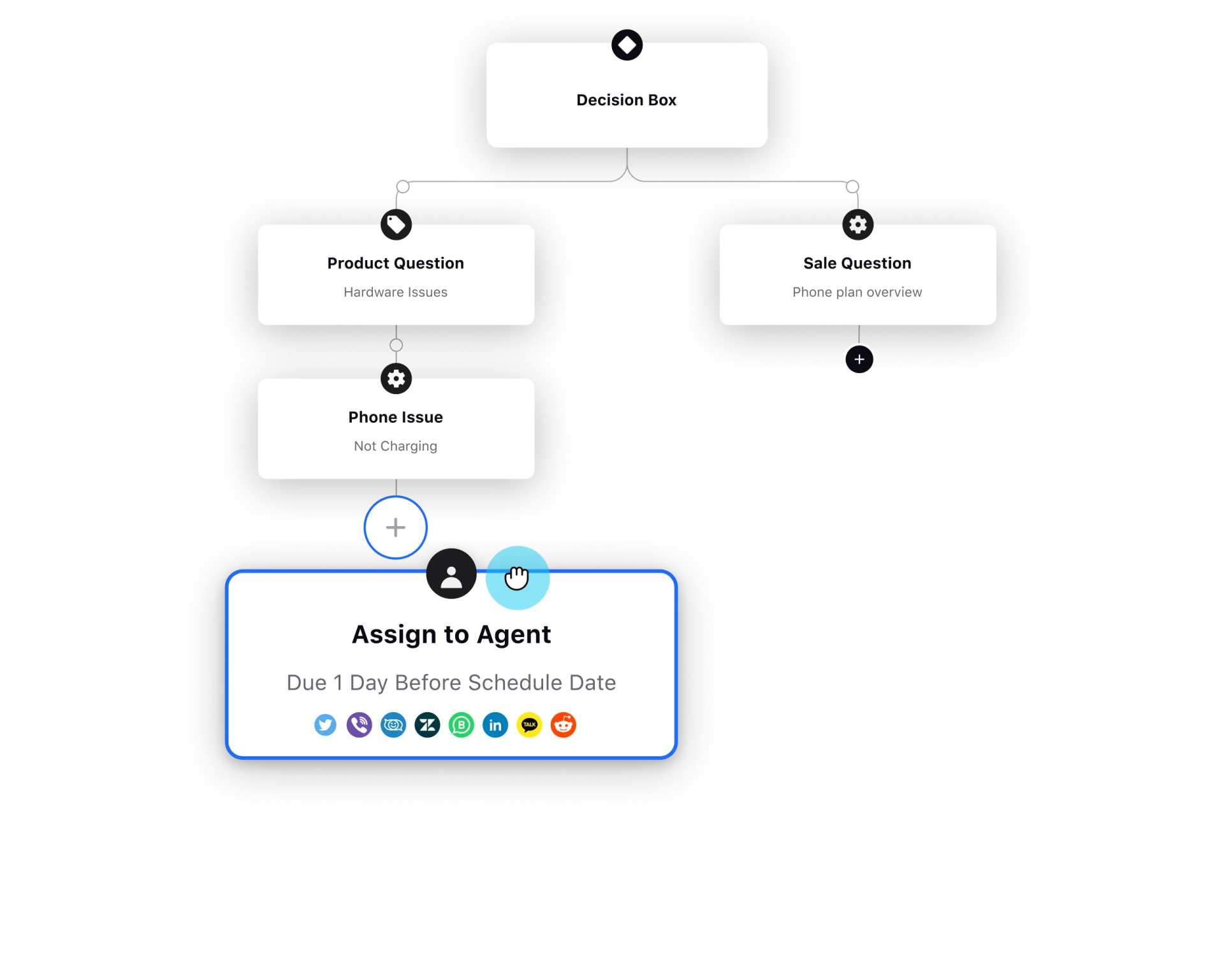
4. Improved agent productivity
While self-serve options are helpful to customers, they are also valuable resources for training new agents to improve their skills and productivity. When agents have resources like the knowledge base portal and FAQ page available to them, they can develop their knowledge over time, which eventually will help them provide quicker resolutions to most customer queries.
5. Personalization at scale
AI-powered self-service tools can deliver personalized recommendations and solutions based on individual customer data. This personal touch, even in a self-service context, enhances the customer experience and drives customer loyalty.
Learn more: Preserving the Human Touch in Customer Service
6. Cost-effective multilingual support
Self-service tools can be offered in multiple languages, making it easier to provide support to diverse customer groups without having to maintain a large multilingual support team. This saves costs while expanding your reach.

7. Data-driven insights
Customer self-service generates a wealth of data regarding customer behavior, preferences and common issues. This data can be analyzed to identify trends, pain points and areas for improvement, driving strategic decisions across the organization.
Customer self-service examples beneficial for your business
Not all customers seek agent intervention for issue resolution. Gain a deeper understanding of your clients' preferred communication channels and steer them toward solutions by integrating self-service tools into your customer service strategy. Here are some prevalent tools and platforms you should consider:
#1. Knowledge base
A knowledge base is a cloud-based software to help businesses build a one-stop place of information for people. It enables the process of creating, storing and sharing information with customers and employees alike with ease.
Example

Just like Spotify does with its knowledge base.
The interface is not only visually engaging but also intuitive. Users are greeted with a prominent search bar and easily accessible top questions. The questions are organized into manageable categories with links to specific topics, enhancing navigation.
Why it works
Utilizing an AI-powered knowledge base streamlines the process of addressing inquiries, eliminating the need for customers to search extensively. Customers access help center content through a website's search tool or search engines like Google. Additionally, a company's mobile app can provide help center information. Given that a large portion of users access Spotify via smartphones, this user-friendly and straightforward interface is essential. Spotify demonstrates a keen understanding of its user base, effectively leveraging this insight to enhance customer service.
Best practice: Elevate search's role in user experience design
Navigating through data silos doesn't align with the goal of swift issue resolution. Your self-service platform's UX design should facilitate customers to access help promptly and effortlessly.
Learn more: Must-have Features for Free Knowledge Base Software
#2. Conversational AI chatbots
Conversational AI chatbots are sophisticated computer programs designed to engage in natural, human-like conversations with users.
Example

Just like Sprinklr’s customer self-service conversational AI chatbot.
As seen in the screenshot, how it detects intent, need and mode of communication dissecting the texts of the user.
Why it works
By leveraging Natural Language Processing (NLP), these chatbots provide immediate responses to user inquiries, allowing customers to obtain information without requiring human agent involvement. This technology contributes to the development of an efficient and user-friendly self-service environment for customers.
Best practice: Power your chatbots with content repositories and knowledge bases
In most cases, crucial information is scattered across different repositories—product manuals, internal networks and support documents. The challenge lies in seamlessly connecting these sources through an intuitive search interface. Bridging this gap in information accessibility is crucial for enhancing customer self-service, and that's where conversational AI chatbots shine.
#3. Product tutorials
Product tutorials are informative and instructional resources designed to guide users through the features, functionalities and effective usage of a specific product. These tutorials provide step-by-step instructions, visual aids and practical examples to help users understand how to make the most of the product's capabilities.
Example
Just like Adobe does, uploading product tutorial videos on a regular basis in one place. It makes it easier for their users to understand the tools better and use them efficiently.
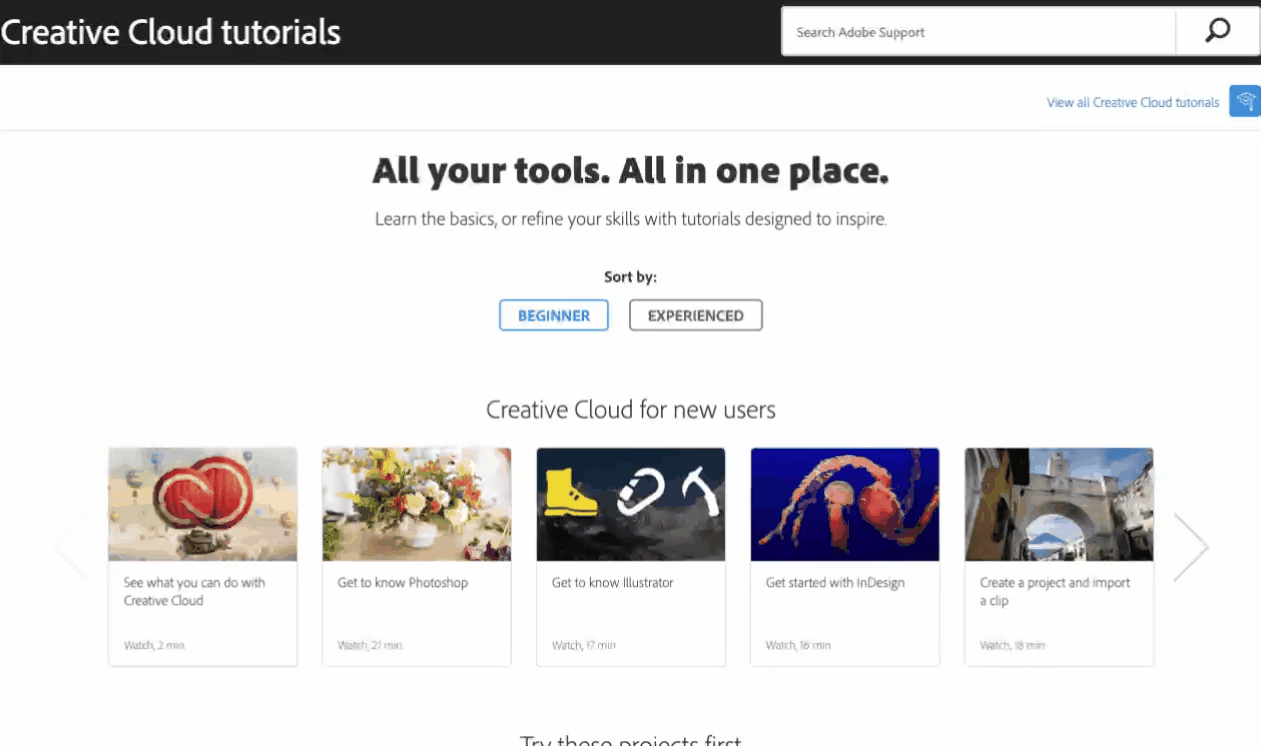
Why it works
Incorporating videos into customer self-service is crucial. They are highly favored due to their ease of consumption. Support teams recognize the significant potential of videos in fostering customer engagement. To cultivate a personalized connection throughout the customer journey and to effectively enhance user understanding of your product's capabilities, it's imperative to integrate product training videos into your self-service approach.
Best practice: Update your content regularly
Update your knowledge base articles, customer self-service portal, and FAQ page regularly with each product release. If those resources feature outdated information, that will negatively impact your customer satisfaction (CSAT).
#4. Community forums
A community forum serves as a dynamic platform where customers openly discuss their experiences, challenges and suggestions. This interactive space not only fosters a sense of belonging but also becomes a rich source of insights.
Example
Just like Google did with its community forum where experienced users help first-time users how to use the products efficiently.
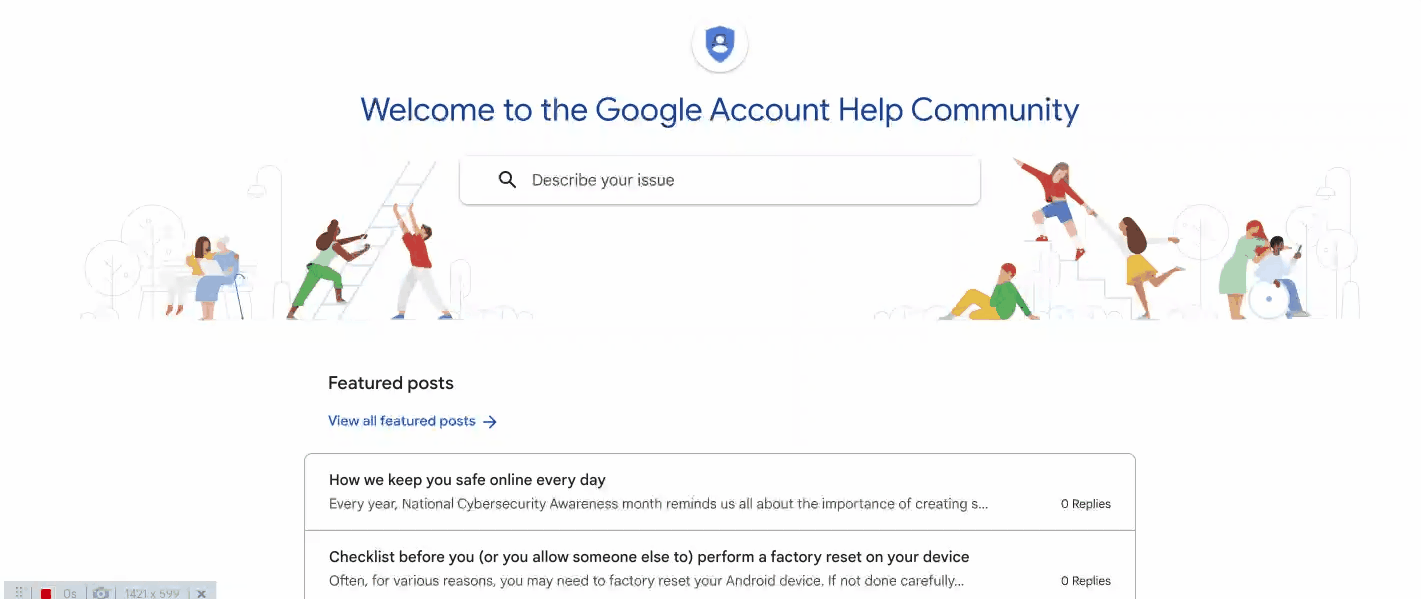
Why it works
Analyzing discussions and trends within the forum provides businesses with a deep understanding of customer needs, pain points and aspirations. This knowledge can be harnessed to tailor strategic recommendations that precisely address these aspects. The forum's collective wisdom enhances decision-making, allowing companies to offer solutions aligned with customer expectations. Ultimately, this engagement-driven approach results in more effective and relevant strategic guidance, leading to improved customer satisfaction and loyalty.
Best practice: Use community forums to integrate smart recommendations strategically
By the time customers seek resolution, a trove of data is available, encompassing purchase history, warranties and location. Utilize this information to proactively offer personalized recommendations, cutting down on time and frustration.
Get started: How to build a great customer community
#5. Automated call centers
An automated call center is a technology-driven system designed to manage and handle incoming and outgoing phone calls without the direct involvement of human agents for routine tasks.
Example
Just like the automated call center — Sprinklr’s Contact Centre as a Service (CCaaS) platform that’s powered by AI, fuelled by real-time insights and built on the world’s only unified customer experience management platform.

Why it works?
Interactive voice response (IVR) technology enables self-service over the phone. Coupled with automated menus, IVR can provide pre-recorded answers to frequently asked questions, enhancing the efficiency of customer self-service.
Best practice: Harness AI to elevate the experience
While artificial intelligence (AI) may evoke futuristic notions, it's transforming present-day customer service. AI-driven learning exploits accumulated customer data to anticipate their needs, enabling proactive responses to queries and engagements.
#6. FAQ pages
FAQ pages, short for "Frequently Asked Questions" pages, are sections on websites or documents that offer concise answers to common queries that users or customers often have.
Example
Just like YouTube does, segregating the most asked questions on one page which makes it easier for users to use YouTube.
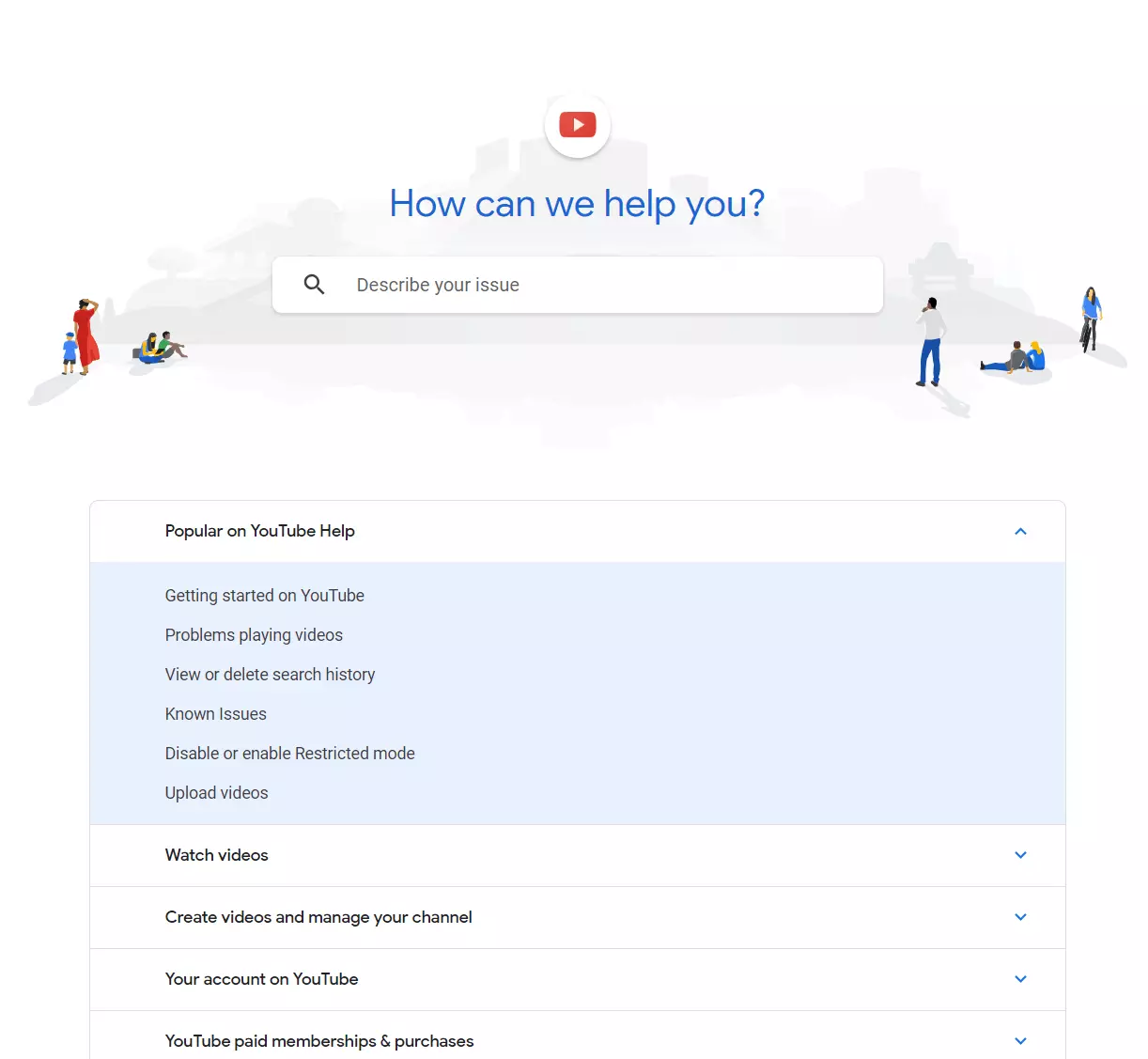
Why it works
FAQ pages are designed to help users find solutions to their questions without the need for direct interaction with customer support, enhancing user experience and reducing the need for repetitive inquiries.
Certain questions are asked by customers repeatedly. Bring them together and create a frequently asked questions and answers page. You save time and resources doing so and amplify the customer experience in the process as they get the info they need from just one source. You can also create FAQ chatbots to help your customers with frequently asked questions 24/7.
And don’t forget to establish metrics to evaluate and adapt your customer self-service
One of the most appealing aspects of customer self-service is its evolutionary nature, enabled by AI-powered data analysis. Employ AI-driven search to monitor, gauge and assess the efficacy of your self-service offerings. Over time, evaluate:
How many queries were diverted from becoming full-fledged cases?
Are you economizing by diverting straightforward issues from live agents?
Are routine inquiries promptly addressed, while novel concerns are effectively resolved?
Measure these outcomes against overarching business objectives. The desired trajectory involves customers self-serving for routine queries, enabling your contact center to tackle more intricate issues. This approach fosters lasting customer relationships and elevated satisfaction levels, signifying that your self-service framework fulfills its intended purpose. Use this checklist to ensure your customer self-service is on the right track.
Customer self-service checklist |
🎮Do you have a user-centric design? |
📕Have you built a comprehensive knowledge base? |
🙇Have you deployed interactive chatbots? |
📲Do you offer multi-channel support? |
📢Can your customers easily escalate their issues? |
😀Are you personalizing self-service experiences? |
🔧Are your employees well-versed with self-serve tools? |
Resolve 40% queries without agents using customer self-service
Customers want to help themselves. In fact, most customers use self-service channels at some point in their resolution journey. Unfortunately, only a few can fully resolve their issues via self-service channels even with so many self-serve tools available.
If you want to help your customers help themselves by guiding them to the answers and services— you need to have a strong ecosystem of online communities, knowledge portals and chatbot support powered by conversational AI. Building an ecosystem like that from scratch is an upheaval task unless you got Sprinklr’s self-service software by your side.
Capitalize on the wisdom of the users
Resolve more customer cases with online communities that surface crowdsourced knowledge and answers related to common issues.Guide customers to the right answers with AI-powered resolution paths
Suggest and recommend answers that will help resolve your customers’ cases using the most advanced AI engine in the industry. With Sprinklr, experience faster resolutions, happier customers and agents who are free to focus on more high-impact issues.
Frequently Asked Questions
related products
Thank you for contacting us.
A Sprinklr representative will be in touch with you shortly.
Contact us today, and we'll create a customized proposal that addresses your unique business needs.
Request a Demo
Welcome Back,
No need to fill out any forms — you're all set.
